What's wrong with this picture?
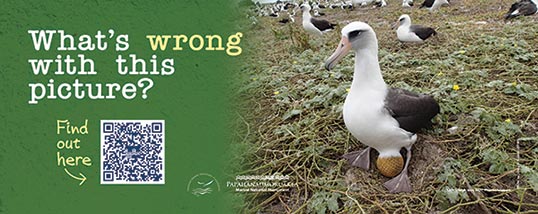
Image of PMNM’s marine debris campaign poster appearing on the public bus system on Oʻahu in Hawaiʻi throughout May 2014.
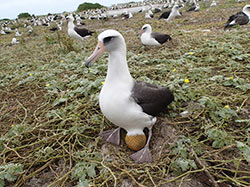
Original untouched photo of a Laysan albatross on Midway Atoll National Wildlife Refuge. Credit: Greg Schubert/USFWS
If you look closely at this picture, you’ll see that this albatross is not sitting on an egg – it’s a plastic pitching ball used for batting practice! This picture was not staged or Photoshopped or otherwise altered in any manner. This image is unfortunately iconic of one of the key threats facing shorelines worldwide – marine debris.
Part of the most remote island chain in the world, Papahānaumokuākea Marine National Monument encompasses the Northwestern Hawaiian Islands, thousands of miles from the closest continents. However, trash from afar reaches its reefs and shores daily as it floats in on ocean currents. Each year, more than 50 tons of marine debris accumulates in the Monument – all of it coming from elsewhere!
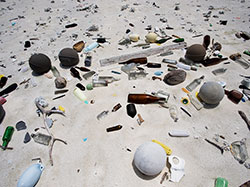
Beach in the remote Northwestern Hawaiian Islands strewn with debris washed ashore from afar. Credit: Wayne Levin
The refuse that accumulates in the Monument consists largely of abandoned fishing gear (nets and buoys) as well as every conceivable type of plastic – from bottle caps to toys to toilet seats. The problem with this debris is that it poses a hazard to wildlife: nets entangle fish, whales, turtles, seals and other marine life and damages coral reefs, the homes of countless creatures.
On Midway Atoll National Wildlife Refuge, which hosts the world’s largest albatross colony, an estimated five tons of plastic is fed to young albatross chicks each year by their parents. Plastic bottle caps, fishing line, lighters and even toothbrushes are mixed in with their natural marine food and fill the chicks’ stomachs, leading to a greater chance of death by dehydration/starvation or a puncture to their digestive tract.
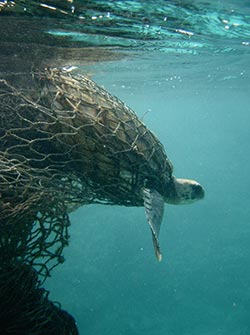
Marine debris, including derelict fishing gear, entangles monk seals and turtles, causing them to drown. Credit: Jake Asher/NOAA
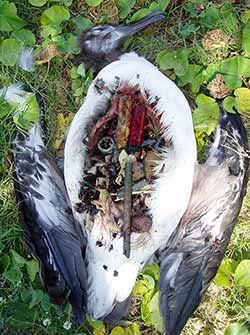
Laysan albatross chick full of plastic marine debris on Kure Atoll State Wildlife Refuge. Credit: Claire Fackler/NOAA
Each one of us can help reduce the amount of plastic on land and in the sea.
The Monument covers nearly 140,000 square miles (362,061 square kilometers) of Pacific Ocean and is dotted with ten islands and atolls and numerous small islets, which host a spectacular array of natural and cultural features. Though relatively pristine, the Monument is vulnerable to impacts from threats that are global in nature, the top three being Alien Invasive Species, Climate Change, and Marine Debris.
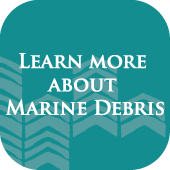 |
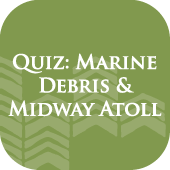 |
 |
| This campaign was sponsored by the National Marine Sanctuary Foundation |  |

